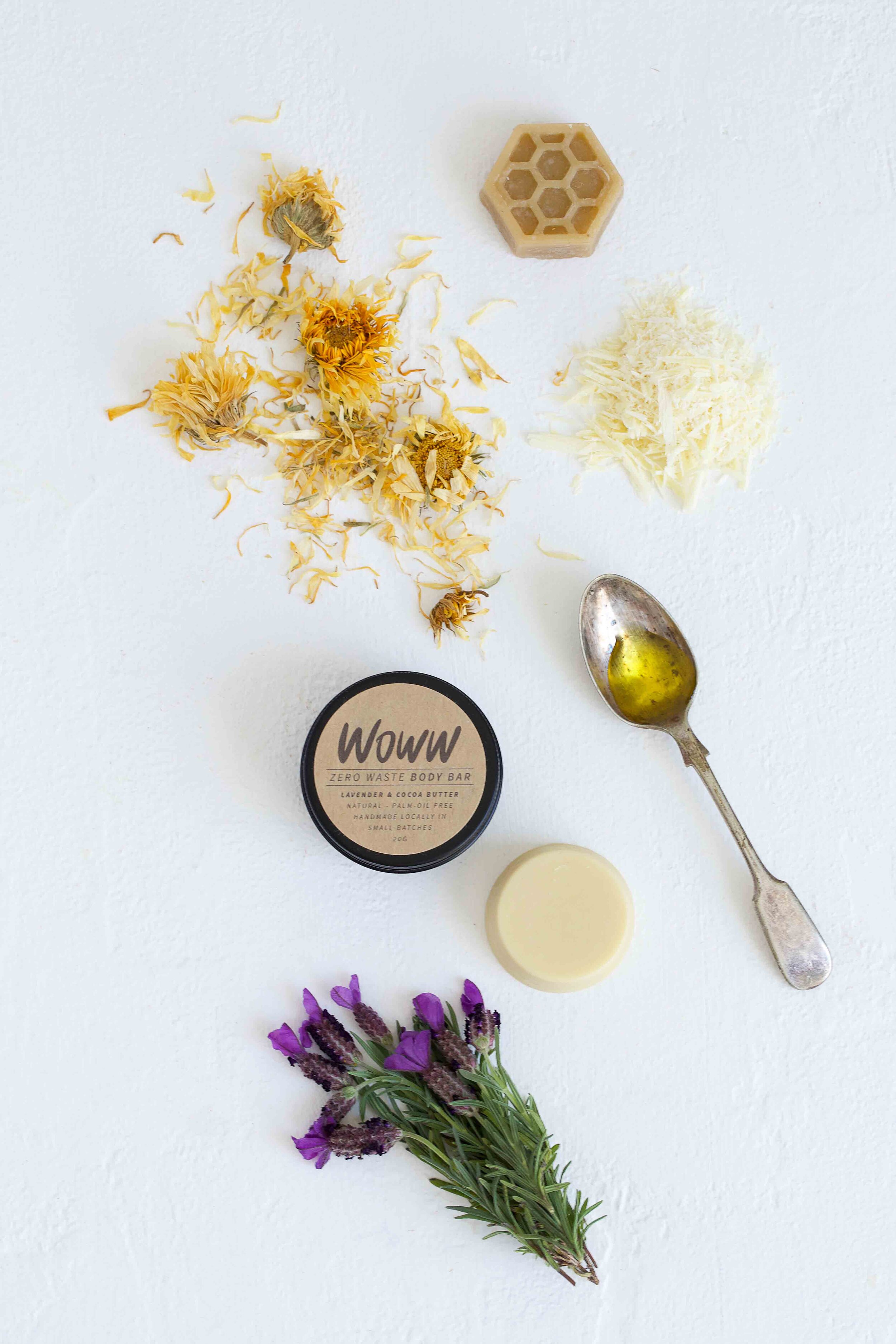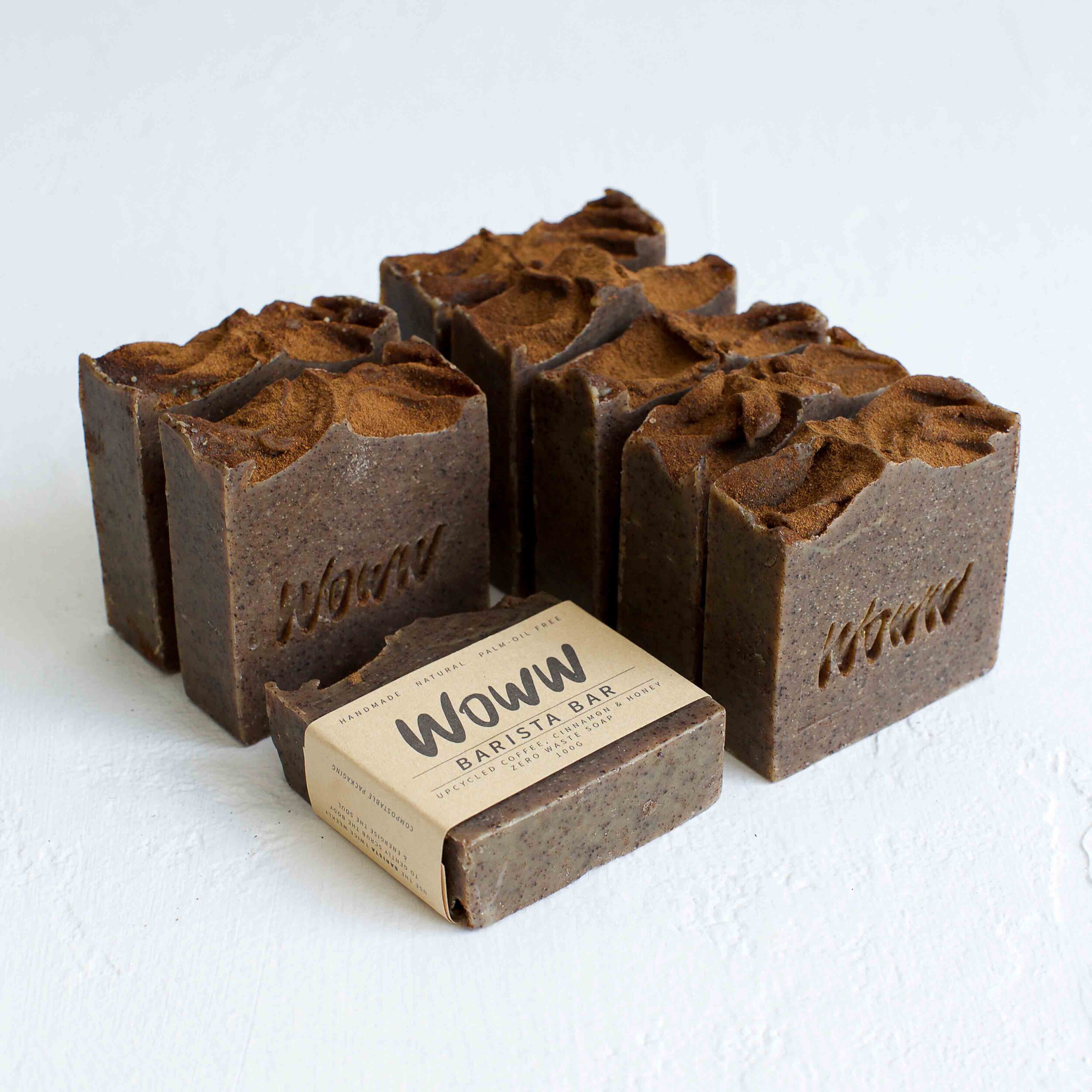Helen Barry: Taking the pain out of plastic free
Words Emma Vidgen // @emma_vee
Photography: Mathew Coyte //@mathewcoyte
Still life photography: Lyn McCreanor
Going plastic-free has got to be in our top five life goals. But actually doing it? It’s just. so. hard. Once you start *seeing* the plastic in your home, there’s no unseeing it. It’s everywhere. In our fridge. In our cupboards. Don’t even get us started on kids’ rooms.
That’s why we love humans like Helen Barry. Helen is the founder of eco-blog War On Waste Weekly. She also makes the most delicious cold process soaps. Helen is an eco warrior, but she’s also a realist. “Before I saw the War On Waste series on the ABC, sustainability wasn’t even on my radar,” Helen says. See? No BS. “I decided grass roots advocacy was the way to make a difference. I wanted to get noisy about the problems with plastic and wake up as many other people as possible,” Helen says.
Helen is on a mission to help people wind back their plastic consumption, and her first stop is the bathroom. “The average person uses about 12 plastic bottles of body wash a year – that’s 2.7 billion bottles that need to be recycled and often aren’t,” Helen explains. “In each 250ml plastic bottle there’s about 200ml of petroleum oil. That’s a lot of oil we’re extracting simply to have the convenience of soap in a plastic bottle.” Here Helen reveals why switching from liquid soap and shower gel is the easiest – not to mention most satisfying – green change you can make.
we really love your woww soap! It made us realise we have been using liquid soap and shower gel forever… but why? Why – and when – did we all stop using normal soap!?
Liquid soap in plastic bottles is a relatively new thing. It arrived in supermarkets in the ’80s and steadily gained popularity, especially in public settings where it was seen as more hygienic and convenient. By the ’90s it became the most popular choice at home, too.
But the true history of soap is fascinating! Soap-making goes all the way back to the Babylonians, circa 2800 BCE. It was discovered by accident when the ancients were sacrificing animals on ceremonial fires. They observed the fats mingling with the wood ash and when water was added a soapy substance formed.
Soap was initially used for washing textiles. It made its way to Europe in the 11th century during the Crusades and it was there that Castile soap, using mainly olive oil, was perfected. But it wasn’t until the mid-nineteenth century when more frequent bathing became fashionable and soap became more affordable that it became more readily available for personal use.
“I also make a solid moisturiser from plant oils and butters that comes in a reusable tin to save on plastic tubes,” says Helen.
How much better for the environment is cold process soap?
Choosing bar soap is a great way to reduce plastic waste and the energy it takes to make and recycle it. It also stops more plastic going into landfill and our oceans when it inevitably doesn’t find its way to the recycling centre.
A plastic-free handmade bar soap that’s produced locally is lower impact than one that’s been shipped from overseas and, when you think about shopping local and supporting small business during the pandemic, it’s a great way to keep more people in jobs, too. If the soapmaking forums I frequent are any indication more people are flocking to the craft of cold process soapmaking, so there’s more than enough to go around!
is cold-process soap less clean or safe especially in the time of COVID?
The hygiene concerns with bar soap are a total myth. There was an American study* in the’60s where a scientist covered his hands with billions of bacteria – nasty stuff like Staph and E. coli – and then washed his hands with a bar of soap. Another person used the same bar and they measured to see if any of the bacteria had transferred from the soap. They concluded none had.
The efficacy of bar soap is worth remembering with all the extra hand washing we need to do because of Covid. The fatty lipids in soap work by tearing the membrane of the virus apart and the friction created when you lather your hands with soap and water for 20 seconds helps to brush off the virus particles and wash them away.
Hand sanitiser is still a good choice for times when you’re out and about and there’s no soap and water on hand, but moisturising cold process bar soap is by far a better and gentler option for a thorough virus-killing clean!
What advice do you have for anyone wanting to transition to cold process soap?
Handmade soap isn’t super hard like the mass-produced supermarket variety, so if you leave it in your shower, where it’s constantly getting wet, it will end up a soft, squishy mess. You need to store it on a good-quality ceramic soap dish with proper drainage so it can dry well between uses.
Dish soap in solid form is becoming more readily available, too, if you are keen to avoid plastic bottles of detergent, or you may want to try soap nuts. They are an all-natural product that you can wash dishes or laundry with.
What makes cold process soap so special?
Handmade cold process soap is naturally more moisturising than the liquid and bar soap you buy at the supermarket because it contains glycerine. That’s the by-product of the saponification process. When oil reacts with an alkaline (lye), it forms soap and glycerine. In the commercial soaps they strip out the glycerine and make other products with it, such as moisturiser. That’s why the soap you buy in the shops is so drying. It’s too cleansing for your skin, because the glycerine has gone! How cheeky that corporations are making us buy two products instead of one – with twice the packaging! It’s outrageous. It makes my blood boil!
Commercial soap is full of synthetic fragrances and preservatives that can cause skin sensitivity in some people and there are environmental issues as well when we wash it down the drain.
A cold-process soap made with natural plant oils and butters, Australian clays and essential oils is much gentler and more moisturising for your skin, and without palm oil it’s also low-impact and sustainable.
Just be sure to choose a handmade soap that’s made from scratch (not “melt and pour” which is made from a synthetic base) and check that it’s free from ingredients such as “fragrance” and “mica”. There are very disturbing child labour issues with natural micas that are used for colouring some soap and other beauty products.





